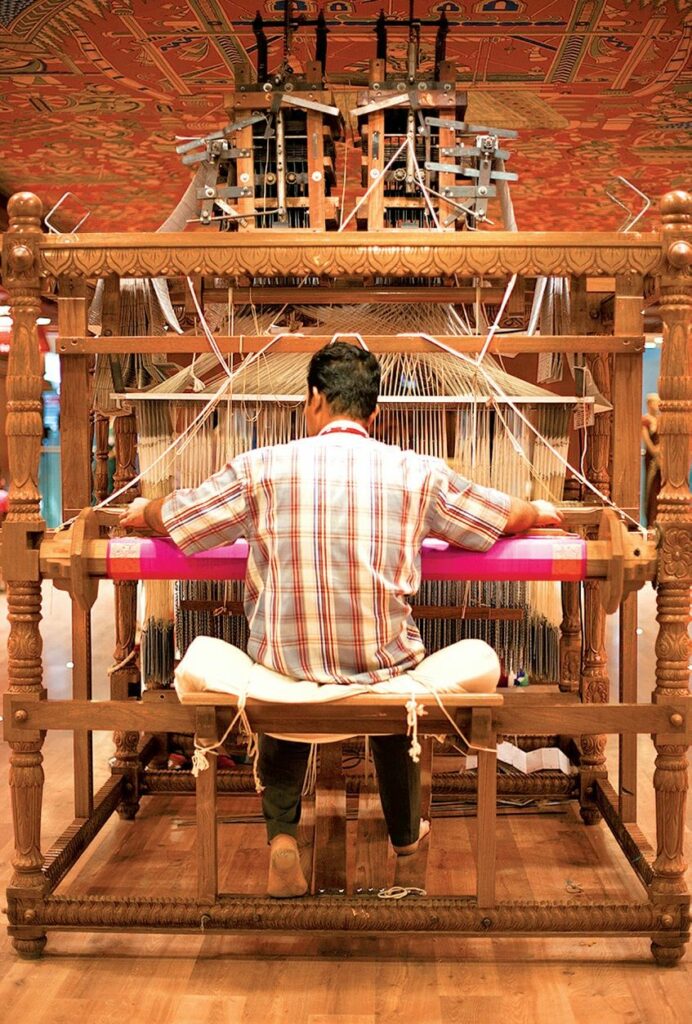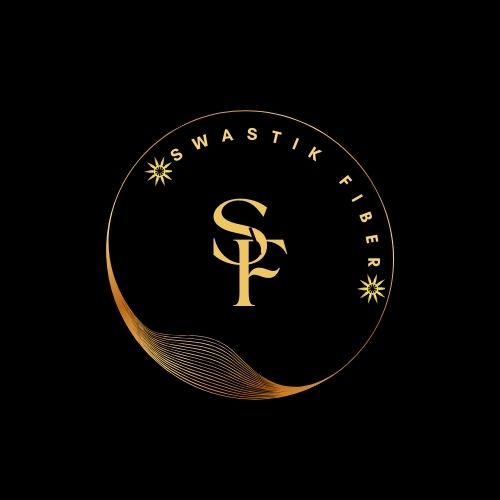The Rise of Ethical Fashion: Embracing Handloom
In recent years, the fashion industry has undergone a significant transformation, with consumers increasingly prioritizing ethical and sustainable practices. This shift has led to the rise of ethical fashion, a movement that emphasizes social responsibility, environmental stewardship, and fair labor practices. At the forefront of this movement is the revival of handloom textiles, revered for their craftsmanship, cultural significance, and minimal environmental footprint. In this article, we explore the burgeoning trend of ethical fashion and the integral role that handloom plays in its evolution


Understanding Ethical Fashion Ethical fashion encompasses a holistic approach to clothing production that considers the social, environmental, and ethical implications of the entire supply chain. It seeks to minimize harm to the environment, promote fair labor practices, and empower marginalized communities. Ethical fashion brands prioritize transparency, accountability, and sustainability in their operations, striving to create a positive impact on both people and the planet.
The Environmental Impact of Fashion The fashion industry is one of the largest contributors to environmental degradation, with processes such as mass production, chemical-intensive farming, and textile waste generation taking a toll on ecosystems worldwide. Fast fashion, characterized by rapid production cycles and disposable clothing, has further exacerbated these issues, leading to pollution, resource depletion, and climate change. In response, consumers are increasingly seeking alternatives that prioritize sustainability and reduce environmental harm.
The Resurgence of Handloom Amidst growing concerns about the environmental and social impact of fashion, handloom textiles have emerged as a sustainable and ethical alternative. Handloom weaving, an age-old craft practiced by artisans around the world, involves the manual weaving of yarn into fabric using traditional looms. Unlike mass-produced textiles, handloom fabrics are crafted with care and precision, resulting in unique textures, patterns, and designs that reflect the cultural heritage of their origins.
Advantages of Handloom Textiles Handloom textiles offer several advantages over their mass-produced counterparts. Firstly, they have a significantly lower environmental footprint, as handloom weaving requires minimal electricity and water compared to mechanized production methods. Additionally, handloom fabrics are often made from natural fibers such as cotton, silk, and wool, which are biodegradable and renewable, further reducing their environmental impact. Furthermore, handloom weaving provides employment opportunities for artisans, particularly in rural areas where traditional crafts are integral to livelihoods.
Social Impact of Supporting Handloom By supporting handloom textiles, consumers contribute to the preservation of traditional weaving techniques and cultural heritage. Handloom weaving is often passed down through generations within artisan communities, serving as a means of cultural expression and identity. Purchasing handloom products helps sustain these traditions, empowering artisans and preserving their livelihoods. Moreover, handloom weaving fosters inclusive economic growth, particularly in regions where marginalized communities rely on textile production for income generation.
Challenges and Opportunities Despite the resurgence of handloom textiles, challenges remain in ensuring their widespread adoption and sustainability. Limited access to markets, lack of infrastructure, and competition from cheaper, mass-produced alternatives pose significant barriers to the growth of the handloom industry. However, initiatives aimed at promoting ethical fashion and supporting artisan communities offer opportunities for collaboration and innovation. By raising awareness, fostering partnerships, and investing in skill development and infrastructure, stakeholders can help overcome these challenges and create a more sustainable future for handloom textiles.
Consumer Empowerment and Conscious Choices As consumers become increasingly aware of the environmental and social impact of their purchasing decisions, they have the power to drive change through conscious consumption. By choosing handloom textiles and supporting ethical fashion brands, consumers can vote with their wallets for a more sustainable and equitable fashion industry. Moreover, by advocating for transparency, accountability, and ethical practices, consumers can hold brands accountable and demand greater social and environmental responsibility.
Conclusion The rise of ethical fashion represents a fundamental shift in the fashion industry, signaling a growing demand for sustainability, transparency, and social responsibility. Handloom textiles, with their rich heritage, artisanal craftsmanship, and minimal environmental footprint, epitomize the values of ethical fashion. By embracing handloom and supporting ethical fashion brands, consumers can play a vital role in shaping a more sustainable and inclusive future for the fashion industry and beyond. Together, we can create a world where fashion is not only beautiful but also ethical, responsible, and empowering.





What exactly is ethical fashion, and how does it differ from conventional fashion?
- Ethical fashion refers to clothing production that prioritizes social responsibility, environmental sustainability, and fair labor practices throughout the supply chain. It focuses on minimizing harm to the environment, promoting fair wages and working conditions for garment workers, and supporting sustainable practices. In contrast, conventional fashion often prioritizes profit margins and rapid production cycles, leading to exploitation of workers and environmental degradation.
What are handloom textiles, and why are they considered a sustainable choice in fashion?
- Handloom textiles are fabrics woven manually using traditional techniques, often passed down through generations within artisan communities. They are considered sustainable because they involve minimal energy consumption, use natural fibers that are biodegradable and renewable, and support local economies and traditional craftsmanship. Handloom textiles also have a unique aesthetic appeal, reflecting cultural heritage and artisanal skills.
How does purchasing handloom textiles contribute to social impact and community empowerment?
- Purchasing handloom textiles supports artisan communities, particularly in rural areas where traditional weaving techniques are integral to livelihoods. By providing fair wages, stable employment, and opportunities for skill development, the handloom industry empowers marginalized communities and preserves cultural heritage. Additionally, it fosters inclusive economic growth and reduces dependency on exploitative labor practices prevalent in conventional fashion supply chains
What are the challenges facing the handloom industry, and how can consumers help address them?
- The handloom industry faces challenges such as limited access to markets, lack of infrastructure, and competition from mass-produced alternatives. Consumers can help address these challenges by raising awareness about the importance of supporting ethical fashion and handloom textiles, advocating for policy changes that support artisan communities, and choosing to purchase ethically made products from transparent and accountable brands.
How can consumers make informed choices and support ethical fashion practices?
- Consumers can make informed choices by researching brands’ supply chain practices, certifications, and commitments to sustainability and ethical production. They can prioritize purchasing handloom textiles and products from brands that prioritize fair labor practices, environmental sustainability, and transparency. Additionally, consumers can advocate for greater accountability and transparency within the fashion industry and support initiatives that promote ethical fashion and artisanal craftsmanship.
Are handloom textiles more expensive than mass-produced fabrics, and is the investment worth it?
- Handloom textiles often have a higher upfront cost due to their craftsmanship and quality. However, they offer long-term value and durability, as they are made to last and withstand the test of time. Additionally, the investment in handloom textiles supports fair wages for artisans, promotes sustainable practices, and contributes to the preservation of cultural heritage, making it a worthwhile investment for those committed to ethical fashion.
How can individuals contribute to the promotion of ethical fashion and the sustainability of handloom textiles beyond purchasing decisions?
- In addition to making conscious purchasing choices, individuals can contribute to the promotion of ethical fashion and sustainability by advocating for systemic change within the fashion industry. This may include supporting initiatives that promote fair labor practices, environmental sustainability, and transparency, as well as engaging in activism, education, and community-building efforts to raise awareness about the importance of ethical fashion and the value of handloom textiles. By taking a proactive stance and supporting broader initiatives for change, individuals can help create a more ethical, sustainable, and inclusive fashion industry.
